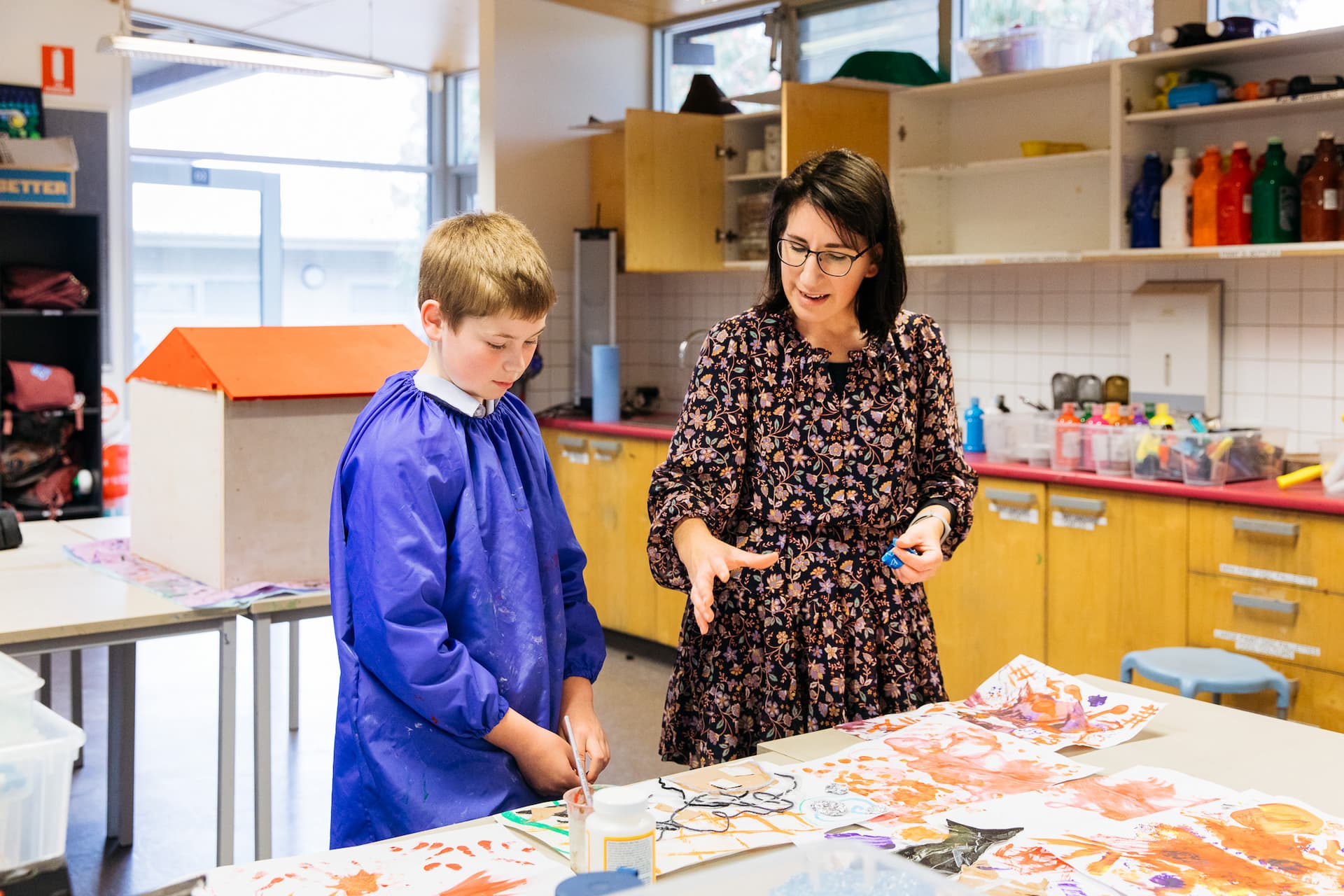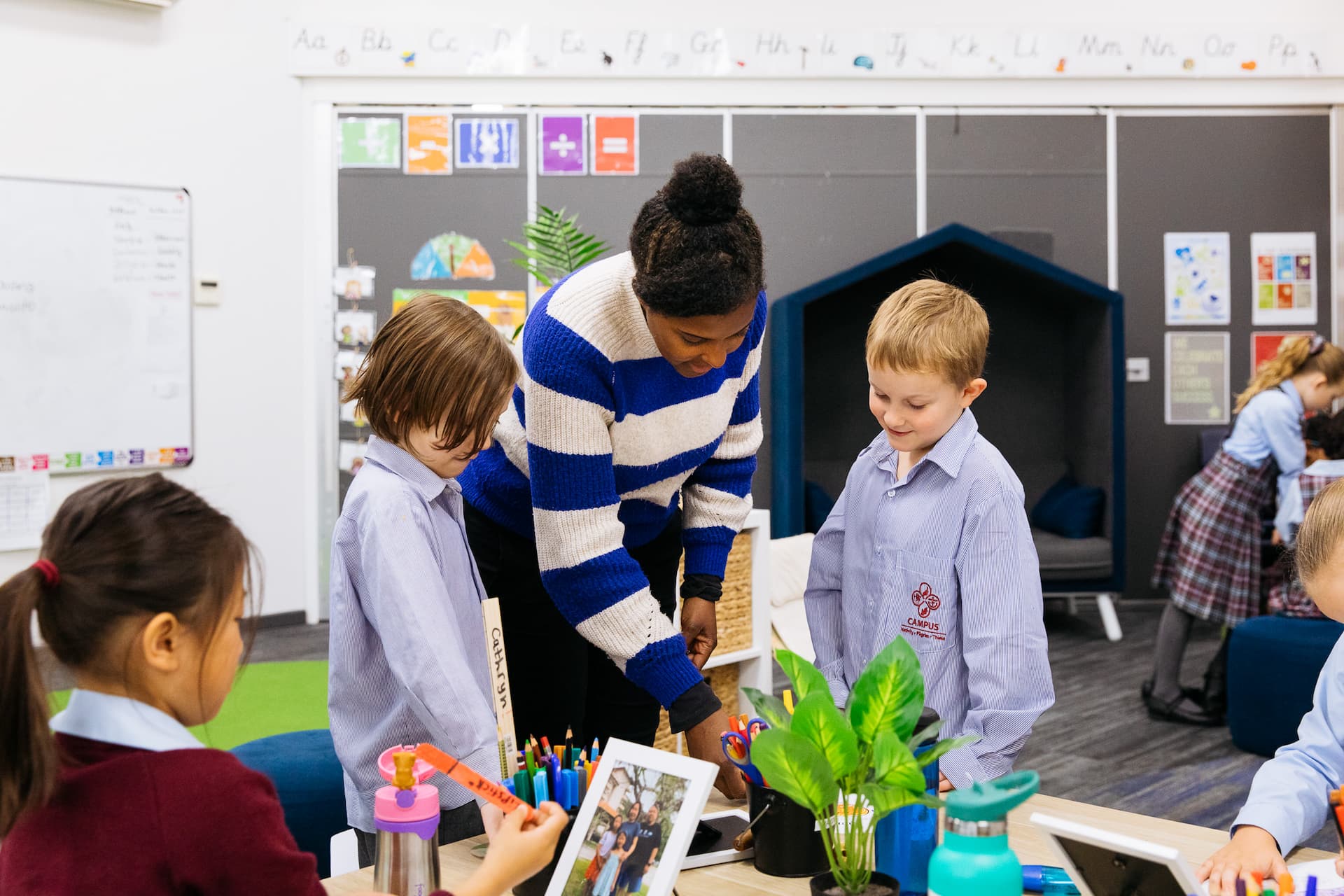Learning
Curriculum
Australian Curriculum
Learning Areas
All areas of the current version of the Australian Curriculum are taught:
- English
- Mathematics
- Science
- Humanities and Social Sciences (HASS)
- The Arts
- Technologies – Digital Technologies and Design & Technology
- Health and Physical Education
- Languages – Indonesian
General Capabilities
In the Australian Curriculum, students become literate as they develop the knowledge, skills and dispositions to interpret and use language confidently for learning and communicating in and out of school and for participating effectively in society. Literacy involves students listening to, reading, viewing, speaking, writing and creating oral, print, visual and digital texts, and using and modifying language for different purposes in a range of contexts.
Literacy enables students to access, understand, analyse and evaluate information and ideas, express thoughts and emotions; present ideas and opinions; interact with others.
In the Australian Curriculum, students become numerate as they develop the knowledge and skills to use mathematics confidently across learning areas at school and in their lives more broadly. The Australian Curriculum states: Numeracy encompasses the knowledge, skills, behaviours and dispositions that students need to use mathematics in a wide range of situations. It involves students recognising and understanding the role of mathematics in the world and having the dispositions and capacities to use mathematical knowledge and skills purposefully.
Applying mathematical skills and knowledge across the curriculum can enrich the study of other learning areas and helps to develop a broader and deeper understanding of numeracy. It is essential that the mathematical ideas with which students interact are relevant to their lives. Students need opportunities to recognise that mathematics is constantly used outside the mathematics classroom and that numerate people apply mathematical skills in a wide range of familiar and unfamiliar situations.
Critical thinking involves students analysing and assessing possibilities against criteria for judgement. They construct and evaluate arguments, and use information, evidence and logic to draw reasoned conclusions and to solve problems.
Creative thinking involves students learning to generate and apply new ideas, and see existing situations in new ways. They identify alternative explanations and possibilities, and create new links to generate successful outcomes.
Ethical understanding encompasses the knowledge and skills students require to identify ethical concepts, understand different ethical perspectives and apply ethical thinking in response to issues.
Ethical understanding involves students building a strong personal and socially oriented ethical outlook that helps them to manage context, conflict and uncertainty. They develop an awareness of the influence that their values and behaviour have on others.
Intercultural understanding encompasses the behaviours and dispositions that students need to understand what happens and what to do when cultures intersect.
Through learning to value their own cultural perspectives and practices and those of others, young people are supported to become responsible local and global citizens. They are equipped for living and working in an interconnected world.
Cross-curriculum priorities
In the Australian Curriculum, cross-curriculum priorities are incorporated through learning area content; they are not separate learning areas or subjects. They provide opportunities to enrich the content of the learning areas, where most appropriate and authentic, allowing students to engage with and better understand their world.
The 3 cross-curriculum priorities in the Australian Curriculum are:
Aboriginal and Torres Strait Islander Histories and Cultures
Asia and Australia’s Engagement with Asia
Sustainability
(taken from the Australian Curriculum Version 9 website)
Learning
At Pilgrim, we nurture a strong sense of identity right from the beginning of a child’s formal learning journey in Foundation. Throughout the lower primary years, our curriculum prioritises the foundational skills of literacy and numeracy. This equips our students to start to develop the skills they need to become strong thinkers, confident mathematicians, and effective communicators.
Our unique programs are designed to support both mathematical and literacy development. These sequential, evidence-based programs are delivered with explicit instruction, carefully tailored to the developmental stages of our learners. In this nurturing Christian environment, we also focus on building a strong sense of wellbeing and fostering the skills of collaboration.
Each student is involved in Units of Inquiry, referred to as ‘iUnits’. iUnits encompass content from the learning areas of HASS, Health and Science from the Australian Curriculum, and integrate our Christian values and beliefs.
We provide an active, stimulating environment to enable children to trial, experiment, explore and grow in confidence and ability.
Learning is continually assessed and feedback provided to students and their parents via Seesaw, Google Classroom, interviews and written reports.


